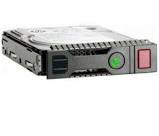

- #Raid monitor linux how to#
- #Raid monitor linux driver#
- #Raid monitor linux software#
- #Raid monitor linux code#
- #Raid monitor linux plus#
The enclosure being used here does not have LED indicators for drive health. Provide more information about the device, and there's a slim chance status can be communicated to the host (if using the right card), but I wouldn't expect it otherwise. What type of eSATA host card are you using?Īt this point, I would rely on the enclosure and visual LED status checks to determine array health.
#Raid monitor linux driver#
Adding a layer of abstraction through eSATA almost eliminates any chance of your drives being exposed to the OS, unless the card you're using in the host has OS-lever driver support. As a result, port multipliers are somewhat rare and don't have much mindshare. Expanders are the norm for server backplanes and external storage JBOD enclosures. The write is not complete until all disk writes are finished. Write performance is slightly worse than on a single device, because identical copies of the data written must be sent to every disk in the array. The partitions that make up a RAID device set should be on separate hard disks.
#Raid monitor linux code#
Using a SAS expander is the preferred and more supportable approach. The Linux RAID code mirrors partitions, not entire disks. It's not surprising that you've had a difficult time finding information about the SATA port multiplier and monitoring under Linux. Heck, using SATA is a bit risky these days, with ever-increasing drive capacities. The use of SATA multipliers is a no-no in server-class systems. You may be one of the only people who have run into this issue :) I'm looking for a way to do this in Linux and then potentially add to Nagios, etc. There are utilities to check/set the RAID settings in OSX/Windows, so it is apparently possible. I looked at some libatasmart tools, but couldn't find anything regarding SATA port multipliers in general. RAID status is my big concern, but actual drive models would be helpful too. One of these is via ioctl, which uses the GETDISKINFO and GETARRAYINFO request codes.
#Raid monitor linux software#
sd 4:0:0:0: Attached SCSI diskĪny guidance on peering at the system underneath would be appreciated. Linux software RAID devices, usually created using mdadm, expose a variety of metric interfaces. Under Windows Dell has a utility called OpenManage which can report when a drive in an array fails. sd 4:0:0:0: Write cache: disabled, read cache: enabled, doesn't support DPO or FUA Hardware RAID Monitoring in Dell Servers I have a Dell PowerEdge T320 server equipped with a Dell PERC H710 controller, this is based on the LSI SAS 2208 (MegaRAID) chip. Linux sees and handles the sata device just fine, but I'm wondering if there's any way to query/monitor the RAID5 status that's hiding behind this HW RAID. Hopefully you know what to do after this step.I am using an external eSATA device which takes 5 SATA drives and presents them as one large HW RAID5 to linux (ubuntu). OK: md:md0:UU md:md1:UU Add it to your nrpe config for remote useĬommand=/usr/lib64/nagios/plugins/check_raid RAID reporting and monitoring systemctl for RAID monitoring.
#Raid monitor linux plus#
In case you want to download the script another way, it’s here: Make sure the script is executableĬhmod 755 check_raid Run the script to confirm the output works (are you really using linux software raid?) Intel Virtual RAID on CPU for HPE Gen10 Plus User Guide, Linux edition. Step by Step Guide Download the check_raid script to your nagios plugins folder The software comes with numerous basic scripts, but when I wanted to keep an eye on the health of my md volumes, I had to wade through a number of scripts to find one that worked how I wanted. There are many services for which you need to seek out monitoring scripts in order to keep an eye on them with Nagios. RStudio supports such devices and when drives from a mdadm RAID are connected to. You can monitor the progress and confirm the finish by looking at the. mdadm is a Linux utility used to manage and monitor software RAID devices.
#Raid monitor linux how to#
It’s a bit of a hassle to setup, but once you get it up and running and understand the basic concept and how to use NRPE, it becomes easy to start monitoring every aspect of every machine in your network. In this howto we will use Linux Raid to setup the redundant OS drive mirror. I use Nagios to monitor every server in my company’s infrastructure.


 0 kommentar(er)
0 kommentar(er)
